Fast Facts on AI Usage Control
-
AI usage control (AI-UC) governs how AI systems are used, not just who can access them, by enforcing rules across prompts, data retrieval, tool use, and outputs in real time.
-
Core components include policy decision points (PDPs) that evaluate context and determine whether an AI request should be denied, allowed in full, or allowed with conditions, such as redaction or justification.
-
Policy enforcement points (PEPs) act on those decisions at critical junctures, like filtering prompts or masking data, ensuring control is applied before misuse can occur.
-
Context-aware controls and audit-ready logs enable organizations to align AI interactions with security, compliance, and data governance mandates while offering transparent accountability.
-
Knostic’s implementation of AI-UC embeds policy enforcement directly into knowledge workflows, enabling secure, compliant AI use without overhauling existing systems.
What Is AI Usage Control?
AI Usage Control is a governance and enforcement discipline that ensures AI systems are used in line with organizational policies, compliance obligations, and data security requirements. Rather than merely controlling access to AI systems, AI-UC defines and enforces how, when, for what purpose, and under what conditions those systems may be used. It operates across the lifecycle of an AI interaction, from prompt to retrieval to tool invocation to output.
In practical terms, when an employee, agent, or system triggers an AI request, AI-UC evaluates contextual attributes (such as user persona, data sensitivity, device, and location) and then enforces decisions (allow, deny, redact, watermark, log) in real time. Organizations implementing AI-UC can mitigate security risks such as data leakage, regulatory noncompliance, model misuse (including unintended agent actions), and uncontrolled shadow AI usage.
In the current era of enterprise adoption, where around 78% of organizations report using AI in at least one business function (up from 55% a year earlier), according to the McKinsey state of AI 2025 survey, the need for usage control is more acute than ever. Furthermore, a 2025 CIO study, AI governance gaps shows nearly half of companies still fail to monitor production AI systems for accuracy, drift, or misuse. For CISOs, DPOs, and compliance and data governance professionals, the shift to AI-UC means moving beyond access decisions to purpose-, context-, and obligation-aware control of AI workflows. With usage control, organizations gain stronger audit trails, real-time AI enforcement, and the ability to align AI productivity with enterprise risk, security, and compliance frameworks.
Key Components Of AI Usage Control
AI-UC is an end-to-end process. A typical AI usage control policy includes decision points that make context-aware decisions, enforcement points which apply them, and audit-feedback cycles that tune obligations and conditions over time.
Policy Decision Point
The PDP is the core decision engine within an AI-UC architecture. When an AI request is initiated, the PDP receives metadata about the user (persona, role, location, device), the data (sensitivity, classification, regulatory tags), and the context (request purpose, time of day, workflow stage). The PDP then references a policy repository that defines rules such as “marketing personas cannot access raw financial data,” or “EU personal data cannot be processed by non-EU deployed models without approval.” Based on this evaluation, the PDP issues a decision: allow, deny, or allow with obligations (e.g., redact, watermark).
Policy Enforcement Points
PEPs are the “touch-points” where the decisions made by the PDP are actually executed in the system. They may be embedded at different stages:
-
at the prompt stage, to intercept the user’s query before it hits the model
-
the retrieval stage, managing what data the system draws in
-
the tool invocation stage, restricting which external functions or APIs the AI can call
-
and the output stage, to apply redaction, watermarking or blocking before the user sees a result.
Context Awareness
Context awareness is an essential enabler of intelligent usage control, enabling the system to make more granular decisions by understanding not only who and what, but also where, how, and why. Persona attributes may include role (e.g. CISO, DPO, or analyst), department, seniority, or business unit. Sensitivity attributes denote whether data is personally identifiable, regulated by, for instance, GDPR or HIPAA, or financial, strategic, or public in nature. Location and device factors determine whether the request is coming from a corporate laptop, a personal device, public Wi-Fi, or a remote endpoint.
For enterprises building robust AI-UC, context awareness ensures usage aligns with organizational risk posture, device hygiene policies, and data governance mandates. In short, the same user and data combination may be permitted in one context but blocked or restricted in another.
Obligations and Conditions
Obligations and conditions define what happens when a decision is allowed (with obligations) or denied. These may include mandatory redaction of sensitive fields, adding watermarks to AI-generated output, requiring user-justification prompts (“Explain purpose of this request”), or outright denial.
Conditions may be dynamic. For instance, if a user’s risk score is elevated (due to device posture or location), the system may escalate to denial rather than obligation. These mechanisms embed AI usage governance policies into the user workflow rather than relying on manual review after the fact.
Audit and Feedback Loops
The audit and feedback component ensures that every decision, allow, deny, or obligation, is logged alongside contextual metadata including user, data, location, decision rationale, and outcome. These logs feed into dashboards and governance reviews, enabling CISOs, compliance teams, and data governance leads to track usage, identify anomalies (such as unexpected high-volume requests or unusual patterns), and refine policies.
Feedback loops may reveal that specific rules cause frequent denials or workarounds, signalling the need for policy adjustment or user training. They also support model governance. If usage shows drift (model behaviour outside expected bounds), the logs highlight the issue. Without audit and feedback loops, organizations cannot prove that usage control is working or detect misuse proactively. In short, governance of AI usage is not “set-and-forget”; it requires continuous AI monitoring, logging, and improvement.
How AI Usage Control Works
AI usage control governs every model interaction from end-to-end. Policies define what should happen before a prompt runs and after a result appears. Context adds purpose, sensitivity, device, location, and jurisdiction. Decisions apply at the prompt, retrieval, tool, and output layers. Obligations add redaction, watermarking, or justification when risk rises. Auditing records what happened and why. Frameworks such as the NIST AI Risk Management Framework and ISO/IEC 42001 endorse lifecycle control and continuous improvement.
Policy Definition
Policies describe acceptable and prohibited AI uses in precise terms. Purpose rules align requests with business intent and compliance needs. Sensitivity rules classify content under categories such as personal data, financials, health data, trade secrets, and public information. Redaction rules define how to mask fields, aggregate values, or remove attributes under specific conditions. Geographic rules constrain data use and model location by jurisdiction and transfer limits. Accountability rules assign ownership for approval, measurement, and review.
Decision Flow
Every interaction begins as a request containing user, data, purpose, device, and location attributes. A PDP evaluates the request against written rules and risk signals. A formal decision returns allow, deny, or allow with obligations. PEPs apply that decision at the correct stage of the pipeline. Redaction, watermarking, sandboxing, or routing follow automatically when obligations apply. Logging captures inputs, decision rationale, enforcement steps, and outcomes. Governance teams are then able to use these records to demonstrate control and to refine the policy over time.
Dynamic Controls
Context shifts drive different actions on the same data and user. For instance, work outside corporate hours can trigger summaries instead of raw outputs. Unknown devices can force masked fields even for privileged personas. High-risk model behavior can tighten obligations until the review is completed. Cross-border requests can be routed to compliant models or denied processing altogether. Classifications like “restricted” can trigger stricter controls across prompts and tools. Ultimately, risk-based adjustment aligns with NIST’s manage-function guidance and EU AI Act expectations on governance.
Example of How AI-UC works
A marketing manager asks an assistant for campaign performance metrics based on revenue data. The PDP checks persona, purpose, device trust, and office location. The decision returns “allow with obligations” due to financial sensitivity and non-financial persona. Retrieval PEP blocks raw tables and fetches only approved aggregates. Output PEP redacts granular values and adds a “for internal use” watermark. The system stores a justification that references the relevant finance-data policy rule. Audit reviewers later confirm that the purpose, sensitivity, and obligations align with the written controls.
AI Usage Control vs Access Control
Access control governs who can reach systems and datasets. Usage control governs how that access operates in practice. Access models such as role-based access control (RBAC), attribute-based access control (ABAC), and persona-based access control (PBAC) resolve identity and coarse permissions. Usage control resolves purpose, conditions, redaction, and obligations per request. Access checks run at login and object boundaries. Usage checks run at prompt, retrieval, tool, and output boundaries. The combined design delivers layered defense and meets management system expectations for ongoing risk treatment.
AI Usage Control Implementation Roadmap
Successful adoption follows a precise sequence of actions. Governance starts with visibility and ends with verifiable evidence. Context-aware rules guide every decision across prompts, retrievals, tools, and outputs. Real-time enforcement prevents misuse before damage occurs. Feedback loops refine policies based on live behavior, and dashboards surface trends for security and compliance leaders. Audit-ready records close the loop for regulators and internal assurance.
-
Identify AI Touchpoints
Discovery maps where prompts originate, which data sources feed retrieval, which tools agents can call, and where outputs land. Application inventories reveal shadow usage, unmanaged connectors, and risky workflows. Data-flow diagrams expose crossings of jurisdictions, networks, and device types. Ownership matrices assign accountable contacts for each touchpoint. Business impact ratings prioritize high-value and high-risk paths first. Threat modeling highlights misuse scenarios such as prompt injection, oversharing, and lateral tool abuse. This foundation anchors all later policy and enforcement design.
-
Define Sensitive Data Categories
Clear taxonomies drive consistent decisions. Classifications cover personal data, regulated health or financial data, intellectual property, confidential plans, and public content. Jurisdictional tags capture GDPR, HIPAA, PCI DSS, or sector rules where relevant. Lineage tags mark derived data, synthetic subsets, and aggregated outputs. Machine-readable labels travel with records through the retrieval and output stages. Data stewards validate definitions with legal and security stakeholders. Intense labeling enables precise redaction, summarization, and routing.
-
Pilot Policy Engine
A contained pilot proves the decision logic before scale. Use one business use case to provide realistic prompts, retrievals, and outputs. A minimal policy set should encode purposes, personas, sensitivity thresholds, and obligations. The PDP runs beside the workflow and returns allow, deny, or allow-with-obligations outcomes. Success criteria measure false blocks, leakage prevention, latency, and user satisfaction.
-
Integrate Enforcement at Prompt/Retrieval/Output
PEPs execute decisions where risk materializes. A prompt interceptor screens inputs, adds guardrails, and attaches context to the request. Retrieval middleware filters queries, masks fields, and swaps raw data for aggregates. Tool-call brokers restrict dangerous actions and require explicit approvals for high-risk operations. Output governors redact sensitive tokens, watermark generated text, and block unsafe results. All components send structured events to a standard log. Tight integration ensures consistent behavior across varied models and platforms.
-
Monitor Logs
Observability converts raw events into operational intelligence. Normal baselines establish expected volumes, personas, and purposes. Anomaly detectors flag spikes in sensitive requests, unusual tool invocations, or novel prompt patterns. Correlation links prompt content, retrieval sources, and output decisions to find root causes. Runbooks guide responders through triage, containment, and policy updates. Metrics track obligation rates, denial reasons, latency, and user friction. And continuous AI usage monitoring supports both day-to-day security strategies and quarterly governance reviews.
-
Automate Obligations
Automations keep responses safe without manual steps. Redaction removes direct identifiers, sensitive fields, and high-risk attributes before output. Summarization replaces granular figures with approved aggregates for non-privileged personas. Watermarking signals generation by AI and embeds lineage tags. Justification prompts users for intent when risk exceeds thresholds. Routing sends sensitive flows to compliant regions or higher-assurance models. Automated obligations deliver consistent protection at production speed.
-
Enable Dashboards
Role-based views give leaders actionable clarity. Security teams track denials, obligations, and injection attempts. Compliance teams review jurisdictional routing, retention status, and policy alignment. Data governance teams inspect sensitivity distributions and lineage patterns. Product owners monitor user experience, latency, and success rates. Executives see trend lines that connect control posture to business outcomes. Drill-down paths expose the underlying events and decisions for investigation. Finally, dashboard evidence accelerates decisions and supports stakeholder trust.
-
Prepare Audit-Ready Documentation
Strong records prove control effectiveness. Decision logs should include context, ruling, obligation details, and enforcement timestamps. Policy registers show versions, owners, and approval history. Control narratives explain design, scope, and monitoring methods in plain language. Test reports document red-team exercises, break-glass flows, and remediation actions. These include data maps and retention schedules linking sources, regions, and legal bases. Export packages align with regulator expectations and internal audit templates. And consistent documentation reduces audit time and strengthens enterprise assurance.
How Knostic Enforces AI Usage Control
Knostic enforces usage control at the knowledge layer with runtime PBAC that extends existing RBAC, evaluating persona, purpose, sensitivity, and provenance at time of prompts, retrieval, tool calls, and answers. It gates access pre-inference and performs real-time redaction or blocking on generated output. This means that assistants honor need-to-know while synthesizing across sources. Enforcement provides complete inference lineage and tamper-evident audit records, complementing (not replacing) your identity and DLP stacks.
Various decisions occur inline without slowing the flow of work. For instance, enforcement points check context before restricted content is retrieved, and prevent cross-source recombination that would create new disclosures. Pre-production prompt simulation and red-team-style tests use real access profiles to expose leakage paths. Continuous posture reviews watch models, connectors, agents, and permissions for jailbreak susceptibility, excessive scopes, and misconfigurations.
Policies consider who is asking, why, and which knowledge types are in scope, driving allow, deny, or allow-with-obligations outcomes. Evidence-backed recommendations refine labels and permissions without redesigning data architectures. Every governed interaction produces structured audit trails that document the decision, rationale, and obligations, enabling investigations, compliance reporting, and the identification of gaps in RBAC, DLP, or labeling.
What’s Next
Learn how AI Usage Control moves from concept to verifiable enforcement in real-world workflows. Request Knostic’s Solution Brief to see the architecture, enforcement points, and audit flows in one place.
FAQ
• How is AI usage control different from access control?
Access control answers who can reach systems or documents. Usage control answers how knowledge can be used in context, by purpose, sensitivity, and conditions at each step.
• Why do enterprises need AI Usage Control?
Generative assistants can infer sensitive insights by combining pieces from multiple sources. Traditional tools rarely govern those complex inference paths.
• How can AI Usage Control be implemented?
Start by auditing assistant interactions and exposure hotspots. Define persona- and purpose-aware policies. Connect decision and enforcement points at prompt, retrieval, tool, and output layers: monitor, tune labels and policies, and export evidence for assurance.
• How does Knostic enable AI Usage Control?
The platform governs the knowledge layer with discovery, real-time boundaries, policy recommendations, and explainable audit trails. Controls align with existing permission models rather than replacing enterprise stacks.







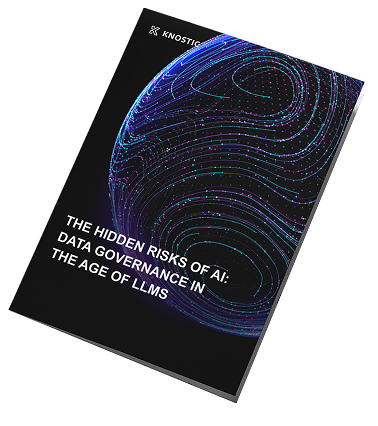
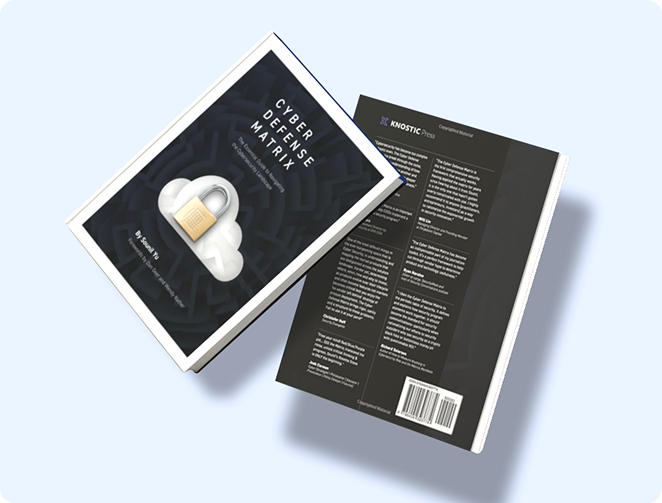
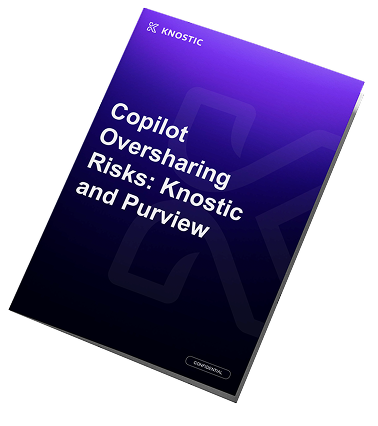

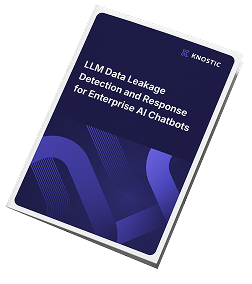

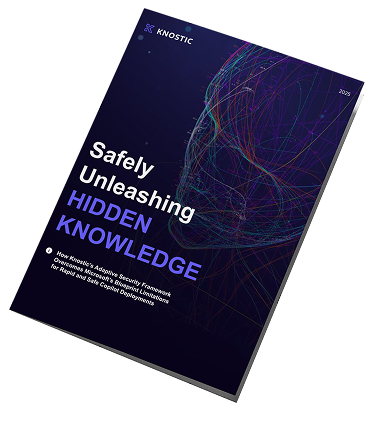





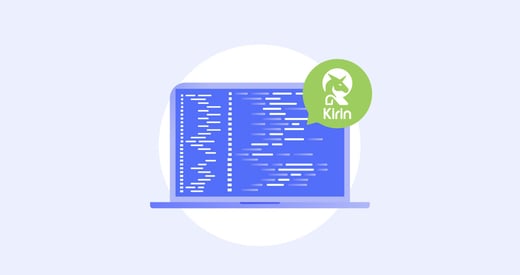
.jpg?width=520&height=294&name=Data-security-posture-management-(DSPM).jpg)
